|
| |
|
| |






Music playing is "Antarctic
Dreams" written by Karen Ronne Tupek with Mack Bailey, sung by
Mack Bailey with Karen singing harmony. To speed loading of page,
click on Turn Music Off.
This "About" page is geared toward Music
and Personal Interests.
Use Links Above for Professional Career
information and more about Karen in the Antarctic.
Karen is the daughter and
granddaughter of polar, especially Antarctic, explorers. She was a member
of her father's expedition to the high Arctic, very close to the North
Pole, visiting historic sites important in exploration. She traveled in
February 1995 to the Antarctic to visit a historic base, constructed by
her father, where her mother became the first woman to visit and
over winter in the Antarctic on their private expedition. Combining her
profession with her heritage, she worked with the National Science
Foundation to make his base an international historic site and to preserve
it, and she contributed material to the site museum. Karen was able to
fulfill her dream to ski in the Antarctic. She had returned five times
and twice semi-circumnavigated the Antarctic continent.
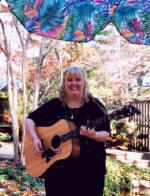
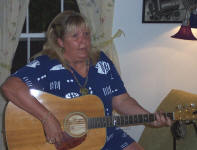

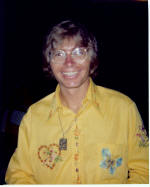 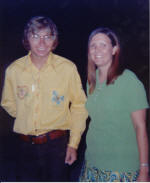
My Early Encounters
with John Denver
by
Karen Ronne Tupek
© Karen
Ronne Tupek - 2001
I started following the folk
music scene in the middle 1960's after my great aunt took me to a Peter,
Paul and Mary concert at the old Carter Barron Amphitheater in Rock Creek
Park, in Washington, DC. It was an open-air theater, with no roofs. I
was captivated by their harmonies. I'd never heard anything like it
before. Folk music became a big part of my life and I taught myself the
guitar so I could perform it, too. I followed other folk artists, though
it was primarily through their association with or links to Peter, Paul,
and Mary, as I primarily focused on them, Judy Collins, and Gordon
Lightfoot. I knew or figured out the links to most of the composers of
the songs that P, P & M sang. But on their "Album" album, my favorite
song titled "For Baby (For Bobbie)", was a mystery. Who was "H. J.
Deutschendorf, Jr."?
I somewhat knew the Chad
Mitchell Trio and was aware of the change in personnel, but I didn't pay
much attention to who the new singer was. At 15, I saw P, P, & M in
concert and surreptitiously recorded their concert. I caught "Leaving on
a Jet Plane", which to my folk-song trained ear, was clearly a winner. I
went right home that night, transcribed the words, figured the chords out
by ear, and started singing that song everywhere I went, even at a large
party in Mexico later that summer. For almost two years, my friends
referred to it as my song and always requested that I play it. I always
said that some guy named John Denver actually wrote it. Only after it
became a hit, two years after it was initially released on P, P, & M's
album called "Album 1700", did everyone view me as a voyeur in the folk
music world.
In the winter of 1970 during
my freshman year at Washington University in St. Louis, I caught a radio
show featuring John Denver. He was in town promoting a new single
release, "Follow Me", which grabbed me right away. When he was introduced
as the composer not only of P, P, & M's hit "Leaving On a Jet Plane, but
also "For Baby (For Bobbie)", my mystery was solved and I had a new folk
singer to follow. I was immediately enthralled and rushed out to buy his
three albums.
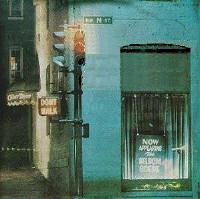 When home on break that next
summer of 1970, I saw that he was appearing at the Cellar Door in
Georgetown, an upscale, trendy neighborhood along the banks of the Potomac
in Washington. It was a dumpy sort of club located in a two story
historic building of plain Victorian style on the corner of 34th
and M Streets. On the brick exterior the first floor was painted gray and
the second floor white. The entrance was a small dark wood door up the hill on
the side street; over it was a small half-domed canopy with scalloped
edges and the imprint “The Cellar Door” facing both ways. But it played
host to some of the hottest acts in the folk music business. It was a roughly
square two-storied space inside with a fairly large raised stage in one
corner; on the opposite corner was the entrance door fixed halfway between
the main floor and balcony levels. Balconies with tightly packed tables
ran across the back two sides and rows of chairs were lined up against the
walls below. Fans would wait in line down the street and around the
corner; other times the line would be in the other direction up the
street. People were crammed in, chair touching chair, broken up with the
occasional café table. The fire marshals must have looked the other way,
as the place was wall-to-wall people. It probably held about 200 people.
Navigating through the crowd was a real challenge. John had performed
there earlier with the Mitchell Trio. He was known to like the place.
Kris O'Connor was the club manager and John later tapped him to become his
road manager. Local singers Bill Danoff and Taffy Nivert, at the time
known as "Fat City" were frequent performers there - sometimes alone and
sometimes as a warm-up act. I was a frequent member of their audience
when they played there. A solo perfromance at The Cellar Door certainly represented a major
milestone in John’s career. When home on break that next
summer of 1970, I saw that he was appearing at the Cellar Door in
Georgetown, an upscale, trendy neighborhood along the banks of the Potomac
in Washington. It was a dumpy sort of club located in a two story
historic building of plain Victorian style on the corner of 34th
and M Streets. On the brick exterior the first floor was painted gray and
the second floor white. The entrance was a small dark wood door up the hill on
the side street; over it was a small half-domed canopy with scalloped
edges and the imprint “The Cellar Door” facing both ways. But it played
host to some of the hottest acts in the folk music business. It was a roughly
square two-storied space inside with a fairly large raised stage in one
corner; on the opposite corner was the entrance door fixed halfway between
the main floor and balcony levels. Balconies with tightly packed tables
ran across the back two sides and rows of chairs were lined up against the
walls below. Fans would wait in line down the street and around the
corner; other times the line would be in the other direction up the
street. People were crammed in, chair touching chair, broken up with the
occasional café table. The fire marshals must have looked the other way,
as the place was wall-to-wall people. It probably held about 200 people.
Navigating through the crowd was a real challenge. John had performed
there earlier with the Mitchell Trio. He was known to like the place.
Kris O'Connor was the club manager and John later tapped him to become his
road manager. Local singers Bill Danoff and Taffy Nivert, at the time
known as "Fat City" were frequent performers there - sometimes alone and
sometimes as a warm-up act. I was a frequent member of their audience
when they played there. A solo perfromance at The Cellar Door certainly represented a major
milestone in John’s career.
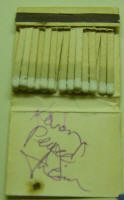 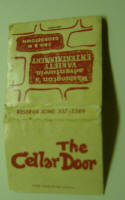 So, on June 9th,
1970, I went there to see John. That night, he dedicated the song
"Follow Me" to his wife Annie, who was sitting in the audience. By that time, I had bought his first
three albums and memorized
and played on guitar most of the songs. I remember stopping him in
the main aisle during the break and quizzing him about a chord I couldn't
figure out in the song, "I Wish I Knew How It Would Feel to Be Free." He
readily explained the complicated chord and he seemed pleased that I was
interested enough to ask. I grabbed a matchbook cover with the Cellar
Door logo, and he scribbled, "To Karen, Peace, John Denver". Of course,
he was known for always using "Peace" with his autograph. So, on June 9th,
1970, I went there to see John. That night, he dedicated the song
"Follow Me" to his wife Annie, who was sitting in the audience. By that time, I had bought his first
three albums and memorized
and played on guitar most of the songs. I remember stopping him in
the main aisle during the break and quizzing him about a chord I couldn't
figure out in the song, "I Wish I Knew How It Would Feel to Be Free." He
readily explained the complicated chord and he seemed pleased that I was
interested enough to ask. I grabbed a matchbook cover with the Cellar
Door logo, and he scribbled, "To Karen, Peace, John Denver". Of course,
he was known for always using "Peace" with his autograph.
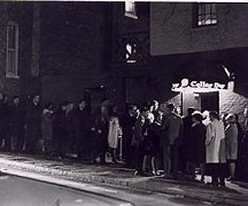 Later that year when I was
home from college for the holidays, I went to see John again at the Cellar
Door on December 30, 1970, a day that should be noted for the debut of his
breakthrough song - "Take Me Home, Country Roads." I sat up close that
night. Bill and Taffy opened for him, as they did each of the successive
nights he was there. This was the middle of their weeklong run of
appearances. At the end of John's headliner set, he brought Bill and
Taffy back out to join him for the encore. He explained that he had
recently been in New York recording his fourth album, which turned out to
be POEMS, PRAYERS AND PROMISES. They had been planning to release one of
the other songs as a single. But he had called the recording company
folks in New York just that afternoon and told them to "hold the presses",
he had a new, sure-hit song to replace it as a single release. He had
even already made arrangements to go back up to New York and record it
right away. Then he described how he had gone to Bill and Taffy's
basement apartment the previous night after their show. (Bill later
told me that the address was: 3072 Q Street, NW, Georgetown.) They often got
together to unwind as well as play and share music. He went on to
describe the now famous late-night, early morning session when Bill and
Taffy shared the partially finished song they were working on, but hadn't
been able to complete. It was about a going down a country road. Of
course, today, Bill tells that he and Taffy had never been to West
Virginia and he was inspired by the then rural, now built-up suburban road
in Gaithersburg, Maryland, called Clopper Road, out near Little Seneca
Regional Park. John liked what he heard and helped them write another
verse and the bridge. They even figured out the harmonies and rehearsed
it, ready to sing THIS NIGHT. Later that year when I was
home from college for the holidays, I went to see John again at the Cellar
Door on December 30, 1970, a day that should be noted for the debut of his
breakthrough song - "Take Me Home, Country Roads." I sat up close that
night. Bill and Taffy opened for him, as they did each of the successive
nights he was there. This was the middle of their weeklong run of
appearances. At the end of John's headliner set, he brought Bill and
Taffy back out to join him for the encore. He explained that he had
recently been in New York recording his fourth album, which turned out to
be POEMS, PRAYERS AND PROMISES. They had been planning to release one of
the other songs as a single. But he had called the recording company
folks in New York just that afternoon and told them to "hold the presses",
he had a new, sure-hit song to replace it as a single release. He had
even already made arrangements to go back up to New York and record it
right away. Then he described how he had gone to Bill and Taffy's
basement apartment the previous night after their show. (Bill later
told me that the address was: 3072 Q Street, NW, Georgetown.) They often got
together to unwind as well as play and share music. He went on to
describe the now famous late-night, early morning session when Bill and
Taffy shared the partially finished song they were working on, but hadn't
been able to complete. It was about a going down a country road. Of
course, today, Bill tells that he and Taffy had never been to West
Virginia and he was inspired by the then rural, now built-up suburban road
in Gaithersburg, Maryland, called Clopper Road, out near Little Seneca
Regional Park. John liked what he heard and helped them write another
verse and the bridge. They even figured out the harmonies and rehearsed
it, ready to sing THIS NIGHT.
 The audience was primed and
ready, since we all loved Bill and Taffy as well as John. Here, this was
something that they had created together, and before hearing it, we knew
it was going to be special - just how special was the big surprise. The
gentle beat and comfortable pace of the song just brought everyone along.
The tight harmonies soared and brought wonderful climaxes. The sound
filled the room and took hold of your senses. By the last repeat of the
chorus, folks were enthusiastically singing along. At the last guitar
chord, the place went wild. John was beaming with pride and excitement.
It was confirmation for him that his instincts were right - he had
discovered a hit. And, of course, "Take Me Home, Country Roads" was; it
was his biggest hit. (For photos of this night, visit Bill's
website:
www.billdanoff.com/BillJohnDenver.htm#Photos) The audience was primed and
ready, since we all loved Bill and Taffy as well as John. Here, this was
something that they had created together, and before hearing it, we knew
it was going to be special - just how special was the big surprise. The
gentle beat and comfortable pace of the song just brought everyone along.
The tight harmonies soared and brought wonderful climaxes. The sound
filled the room and took hold of your senses. By the last repeat of the
chorus, folks were enthusiastically singing along. At the last guitar
chord, the place went wild. John was beaming with pride and excitement.
It was confirmation for him that his instincts were right - he had
discovered a hit. And, of course, "Take Me Home, Country Roads" was; it
was his biggest hit. (For photos of this night, visit Bill's
website:
www.billdanoff.com/BillJohnDenver.htm#Photos)
Three weeks later, I went to
Aspen, Colorado, on a ski trip with friends from college. On January 24,
1971, we took a bus to Snowmass for the day. In the late morning, I got
in a short line for the lift going to the top of an area called The Big
Burn, a wonderful open slope with few trees because of a pre-resort fire.
Right in front of me was standing John, who was in line with a buddy. I
recognized him immediately and greeted him with, "I just saw you at the
Cellar Door. And I was there the night you debuted your new song,
"Country Roads" (That was all I could remember of the title.) It was
great!" He said they either had just recorded it or were about to record
it and it was to be released as a single. He was hoping it would get lots
of radio play. He seemed thrilled to be recognized, as he was still not
yet famous. He asked me where I was staying and we chatted until the
chair on the lift swung around and took him up the mountain. I was in the
chair right behind, explaining to my friends that he was a fabulous folk
singer and was going to be more famous and popular than Peter, Paul and
Mary. Looking at him, they seemed skeptical. Little did we all know just
HOW famous this slightly built man would become.
At the top, he motioned for
me to join him and his friend for a run down the Big Burn. I couldn't
pass this up - skiing with this guy who was to me a mini-celebrity, so I
followed, while my friends made their own way down the slope. I was right
behind him. He was a fast, compact and stylish skier, executing perfect
parallel turns. He stopped along the way and took in the scenery,
with his characteristic "far out." At the
bottom, I waved goodbye and went off on a trail to another slope with my
friends.
Later that day, we stopped
for a late lunch in the village at Snowmass. I encountered John in the
plaza during a little festival and he recognized me. I asked him a
question or two about his music or his schedule. I just remember him
being so nice and accessible.
One of my friends broke her
leg badly, that day. In the evening after dinner, we went to the Aspen
Valley Hospital to take her some overnight things. While we were in the
lobby asking for information, the main doors flew open and there was John
again. He couldn't accuse me of stalking him, since I was there first!
He was holding a blood-soaked towel or the like against his brow. By this
time, he really recognized me and said, "Hi, I was sweeping a broom while
trying the sport of curling and slipped on the ice. I have to get some
stitches." And off he went to the emergency room. I was in heaven that
evening, having seen my new folk singing idol three times in one day. My
friends just thought I was loony.
I spoke to him one more time
that year. It was August 1971 and he was the opening act for the now solo
Mary Travers, since Peter, Paul and Mary had temporarily parted ways
earlier that year. They were playing the Carter Barron Amphitheater
again. By this time, he was gaining notoriety from the recently released
"Take Me Home, Country Roads" and Mary was singing one of his great songs,
"Follow Me." That night, he sang the usual songs from his first four
albums with the highlight, of course, being "Take Me Home, Country
Roads." The music reviewer for The Washington Post wrote of that
evening:
"Her (Mary Travers) brilliant facility for harmony would have been lost
to the audience had not John Denver, who preceded her on the bill, joined
her in an encore of Bob Dylan's "Blowin' in the Wind." Denver ran through
his standard bill of contemporary folk-type compositions, many of which he
wrote himself, including the hit single, "Take Me Home, Country Roads."
Too bad Miss Travers didn't join Denver, in turn, to sing the harmony that
Washington's Fat City provides on the Top 40 version. Too bad, too, that
Denver kept insisting the audience sing along with him. It's a demand
made frequently, it seems by folk-type performers, but rarely acceded to
with much enthusiasm by audiences."
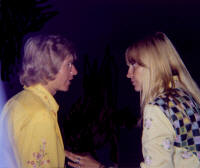 Oh, what did he know?! I
went back stage to see both of them and John actually remembered me from
Aspen. He mainly remembered seeing me in the lobby of the hospital. I
jokingly checked out the scar on his brow and it was healing just fine. I
snapped a great photo of him talking to Mary. They really seemed to be
engrossed in their conversation and were oblivious to the fans waiting for
autographs. Eventually, he posed for photos, alone and with me. I
treasure those photos from my last encounter up close and personal -
before his extraordinary fame later on made it so difficult to talk to
him. Though I saw him in person in concert several dozens of times later, I never
spoke to him again. Oh, what did he know?! I
went back stage to see both of them and John actually remembered me from
Aspen. He mainly remembered seeing me in the lobby of the hospital. I
jokingly checked out the scar on his brow and it was healing just fine. I
snapped a great photo of him talking to Mary. They really seemed to be
engrossed in their conversation and were oblivious to the fans waiting for
autographs. Eventually, he posed for photos, alone and with me. I
treasure those photos from my last encounter up close and personal -
before his extraordinary fame later on made it so difficult to talk to
him. Though I saw him in person in concert several dozens of times later, I never
spoke to him again.
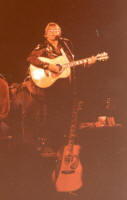 From
other sources: Denver recorded the POEMS, PRAYERS AND
PROMISES album in New York during the fall of 1970, but postponed the
final mix until after the holiday season and a return engagement to a
favorite old haunt, the Cellar door in Washington, D.C. The
engagement provided the opportunity for a reunion with his friends Bill
and Taffy Danoff, who together were the mainstays of his opening act, The
Fat City Band. From
other sources: Denver recorded the POEMS, PRAYERS AND
PROMISES album in New York during the fall of 1970, but postponed the
final mix until after the holiday season and a return engagement to a
favorite old haunt, the Cellar door in Washington, D.C. The
engagement provided the opportunity for a reunion with his friends Bill
and Taffy Danoff, who together were the mainstays of his opening act, The
Fat City Band.
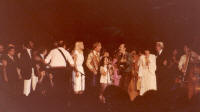 Denver was including one of the Danoff's
compositions, "I Guess He'd Rather Be In Colorado," on the
album he'd just finished recording. In the wee morning hours following their opening
night, Bill Danoff shared with John a half-finished song which he thought
had potential. Denver agreed, and
contributed a bridge and the second verse. They premiered the new
composition, entitled "Take me Home, Country Roads," as an encore the
following night. "The place went crazy," Denver later recalled. He
hurriedly decided to add the number to POEMS, PRAYERS AND PROMISES. Denver was including one of the Danoff's
compositions, "I Guess He'd Rather Be In Colorado," on the
album he'd just finished recording. In the wee morning hours following their opening
night, Bill Danoff shared with John a half-finished song which he thought
had potential. Denver agreed, and
contributed a bridge and the second verse. They premiered the new
composition, entitled "Take me Home, Country Roads," as an encore the
following night. "The place went crazy," Denver later recalled. He
hurriedly decided to add the number to POEMS, PRAYERS AND PROMISES.
 Karen and favorite folk singer and dear friend,
Mack Bailey
Karen and favorite folk singer and dear friend,
Mack Bailey
Karen's article about Behind the
Scenes: Recording in
Nashville with folk music star Mack Bailey
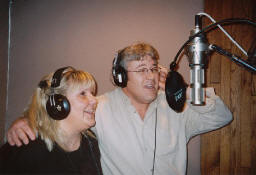 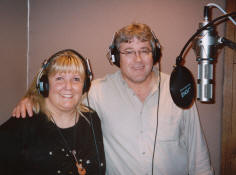 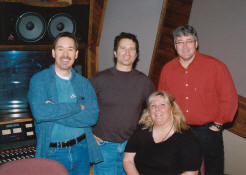
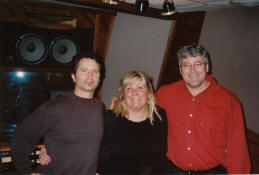 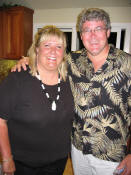
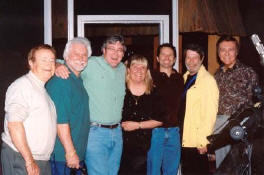
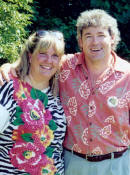
Mack's Web site:
www.mackbailey.com
 Karen and
Folk Music:
Karen and
Folk Music:
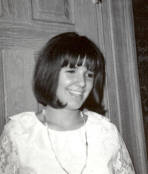
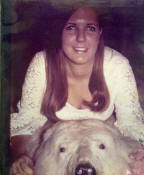
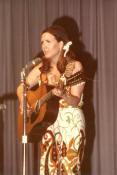
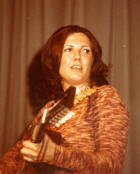
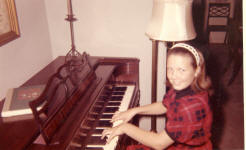 Once upon a time, I had little music
stimulation growing up at home, though I started with piano lessons in
second grade. I also joined the
school choir that sang in the Washington Cathedral – all serious classical
music. When I was 10, my ultra-conservative, classical music-loving
great aunt took me to a Peter, Paul and Mary concert (go figure!), my
first exposure to folk music and their wonderful harmonies. I was
hooked. Once upon a time, I had little music
stimulation growing up at home, though I started with piano lessons in
second grade. I also joined the
school choir that sang in the Washington Cathedral – all serious classical
music. When I was 10, my ultra-conservative, classical music-loving
great aunt took me to a Peter, Paul and Mary concert (go figure!), my
first exposure to folk music and their wonderful harmonies. I was
hooked.
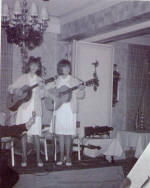 During the next
years, my best friend, Theo deMers, and I taught ourselves to play guitar,
figuring out chords to their songs by ear. Her older brother Geoff (now a
member of the Second Story Band) was becoming an accomplished folk singer,
so he taught us the names of these chords, and as we progressed, he took
an interest in working with us. Our song repertoire grew. Thus, the
first recordings were made in their living room. Eventually, we became
The Misty Eyes. During the next
years, my best friend, Theo deMers, and I taught ourselves to play guitar,
figuring out chords to their songs by ear. Her older brother Geoff (now a
member of the Second Story Band) was becoming an accomplished folk singer,
so he taught us the names of these chords, and as we progressed, he took
an interest in working with us. Our song repertoire grew. Thus, the
first recordings were made in their living room. Eventually, we became
The Misty Eyes.
Our biggest gig
was appearing on TV – WDCA’s “Wing Ding” a local Washington version of the
old American Bandstand. I had been a regular dancing on the show for
a year,
meeting all the top pop singers who came through the studio. When
the show’s host brought out a surprise cake to celebrate my birthday on
air, during the personal interview, I told about my singing group. We
were invited to perform – no audition. So, we did. Fortunately, we
didn’t embarrass ourselves. That live recording is my most cherished.
 In August 1967,
I sneaked a recording during a Peter, Paul and Mary concert. One new song
really stood out and I worked it out by ear later that night. Everywhere
I played the song, people associated it with me and requested it. And so
it was with Theo and Geoff, we sang “Leavin’ On A Jet Plane” a full two
years before it became a sleeper hit song off of Peter, Paul and Mary’s
two year old album and started John Denver on his path to fame. In August 1967,
I sneaked a recording during a Peter, Paul and Mary concert. One new song
really stood out and I worked it out by ear later that night. Everywhere
I played the song, people associated it with me and requested it. And so
it was with Theo and Geoff, we sang “Leavin’ On A Jet Plane” a full two
years before it became a sleeper hit song off of Peter, Paul and Mary’s
two year old album and started John Denver on his path to fame.
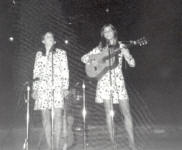 In later high
school years, I occasionally teamed up with others, including Pam Jones
and we performed around town at coffeehouses, school programs, and at
American University’s freshman orientation program. We did one home
recording session. I subsequently recorded a few songs solo during
my college years, with production by my father (he held the mike). In later high
school years, I occasionally teamed up with others, including Pam Jones
and we performed around town at coffeehouses, school programs, and at
American University’s freshman orientation program. We did one home
recording session. I subsequently recorded a few songs solo during
my college years, with production by my father (he held the mike).
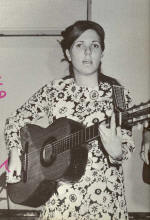 After discovering and meeting John Denver in early 1970 through his
promoting his song “Follow Me”, I found a whole new
world of the most brilliant
songs to sing. I was at the Cellar Door the night of December 30, 1970,
when
After discovering and meeting John Denver in early 1970 through his
promoting his song “Follow Me”, I found a whole new
world of the most brilliant
songs to sing. I was at the Cellar Door the night of December 30, 1970,
when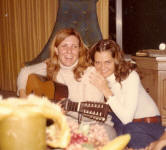 John closed his show by bringing back the opening act of Bill Danoff
and Taffy Nivert to sing for the first time a song they had just finished
composing a few hours earlier, “Take Me Home, Country Roads.” John closed his show by bringing back the opening act of Bill Danoff
and Taffy Nivert to sing for the first time a song they had just finished
composing a few hours earlier, “Take Me Home, Country Roads.”
 After college, I
independently met two guys, Rod Collins and Bill Blackwelder, through
trips with my ski club and saw we shared a
passion for the same music and songs. We decided there was strength
in numbers and teamed up. After college, I
independently met two guys, Rod Collins and Bill Blackwelder, through
trips with my ski club and saw we shared a
passion for the same music and songs. We decided there was strength
in numbers and teamed up.
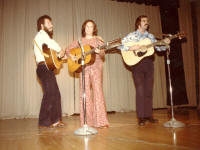 We
played quite a bit, including shows at the Veterans hospital and other
venues, even imitating Peter, Paul and Mary for a few songs, with me using
a blonde wig. We
played quite a bit, including shows at the Veterans hospital and other
venues, even imitating Peter, Paul and Mary for a few songs, with me using
a blonde wig.
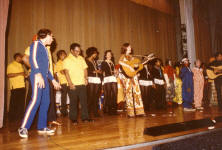 We didn’t fool anybody, but made some fun music. We didn’t fool anybody, but made some fun music.
 And later,
I got to sing a couple of songs at the old Birchmere during a party. And later,
I got to sing a couple of songs at the old Birchmere during a party.
Perhaps I’ll do it for real, one day.
You know, studio, real mikes, the whole bit. What a dream!
Priceless.
Karen Ronne
Tupek, December 2005
"Priceless" CD SET:
|
Priceless Friends:
(1965 – 1980)
Karen
with Geoff and Theo deMers:
“The
Misty Eyes” (1965–1968)
I’m
Not Sayin’ (first
of 3 versions; an early favorite)
Leavin’ On A Jet Plane – 1967
(version
included as
“historic”; recorded 2 years before Peter, Paul & Mary had hit)
The
Good Times We Had (faint
fuzzy recording but
love the harmonies we made; turn up volume)
Hurry
Sundown
(loved singing with Geoff doing the
harmony trade-offs; turn up volume)
The
First Time
“Wing
Ding” WDCA-TV Ch. 20, April 15, 1967
Introduction by Scott Wallace, host
I’m Not Sayin’
Interview with Karen
If
I Had My Way
Postscript
Karen
with Pam Jones (1968-1969)
Times
They are a Changin’ (Pam
has lead here, but
loved singing harmonies and the song)
Colors
Well,
Well, Well
Karen
with Rod Collins and
Bill
Blackwelder (1975-1980)
(sometimes known as “Pizza, Pooh and Magpie”
when wearing Mary Travers-style blond wig)
For
Lovin’ Me
Changes
(this was one of our better efforts in concert)
Leavin’ On A Jet Plane
|
Priceless Alone
(1965 – 1970)
I’m Not Sayin’
Bells of Freedom
All Over The World
When the Ship Comes In
(Karen, with Karen on harmony)
Someday Soon
Both Sides Now (w/ extra 4th verse)
As Tears Go By (on piano)
Exodus (piano instrumental)
For Baby
Sonnet One
(words: John Schweitzer; music: Karen Ronne)
For
Lovin’ Me
(Karen, with Karen on harmony)
No Other Name
No Reply
Bad To Me
Yesterday
The Real Love of My Life
(My “Slut Song” but really from the musical “Brigadoon”)
Song
for Canada
There Is A Ship
When I Need You Most of All
I Guess He’d Rather Be in Colorado
Starwood in Aspen
I Know How It Feels To Be Free
Follow Me
|
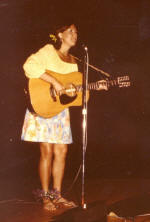 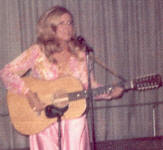
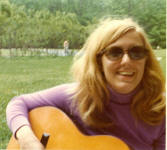
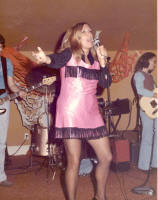
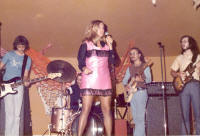
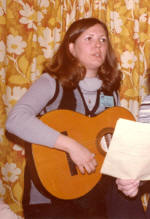
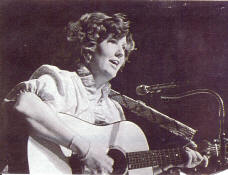
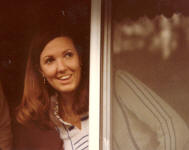
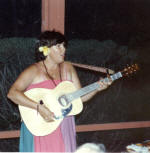
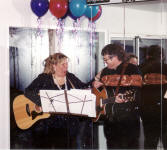
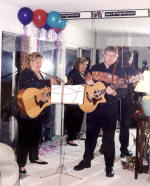

MORE INFORMATION
(click at left)
Antarctic Dreams
(Karen Ronne, Mack Bailey)
Spa Creek Music ASCAP
At the
bottom of the world, a land of white snow calls.
Its
frozen landscape draws me there, as dusky sunset falls.
The
warm pounding rain, Beats on my office window,
I sit and think about my
dream, and know that I must go.
Chorus:
Antarctic Dreams, Antarctic
Dreams,
Of nature's beauty, so serene.
So far away; I'm there
today,
In my Antarctic Dreams, in
my Antarctic Dreams.
I dream of being there; in
my heart, I am captured,
I'm part of this true
solitude, I'm totally enraptured.
Penguins strutting on
parade, whales explore their watery caves,
Among icebergs born from
glaciers, gently carved by pounding waves.
Chorus
Bridge:
Crystal iceberg castles,
cliffs of dazzling white,
Turquoise glows within the
ice, reflected in the light.
The sun
shines soft at midnight, casting warm peach glows,
Over
whipped cream covered mountains, and passing icy floes.
Explorers' footprints left
in snow, that time cannot erase,
I leave my routine life
behind, as I dream about this place.
Chorus
In my Antarctic Dreams.
|
|
Behind the Scenes
Recording Mack's New CD: "Why
I'm Here"
|
~ Mack Bailey ~
Weaving a Musical Tapestry
in a Recording Studio
A music-business outsider witnesses behind-the-scenes
at a Nashville studio as John Denver’s influences shape the making of singer
Mack Bailey’s latest music CD, “Why I’m Here”
by
Executive Producer, "Why I'm Here"
Photos by author, unless marked
Ó
Karen Ronne Tupek 2003

I dubbed them ‘Chris-isms.’
“Raise it just a scooch!” “That sounded a little wiggly wobbly. Give me
something real sweet and tasty.” “That had some grease on it.” “Get some of that stink on it.” “A little loosey-goosey.
You’ve got a better one in you.” And my favorite: “Change that part on the
flippy-doo.”
Huh?
Are you wondering what I could possibly be talking about? Technical
guidance terms for musicians? Yeah, that’s exactly what they are. Well, sort
of. It’s a form of recording studio slang that I named after a highly respected and
talented Nashville music producer and musician, Chris Nole.
These are just a small sample of the fun, strange, and enlightening things I
learned when I
got the rare opportunity, as an amateur, a
music-business outsider, to witness the making of Maryland-based singer Mack
Bailey’s latest CD, using some of the top musicians in the business.
As the experience unfolded, I began to realize
that we were weaving an extraordinary musical tapestry, like those cloth ones
found in the John Denver Memorial Peace Cloth, woven with threads touched
by John's life. I sensed he was watching us.
John Denver's Threads
John Denver touched the life of recording artist,
singer, and songwriter Mack Bailey. Mack learned the guitar and how to
sing a song using John’s music. John was Mack’s childhood
influence and the inspiration to pursue his own musical path. A career
highlight for Mack was swapping verses on “Thank God I’m a Country Boy” with
John, at the Baltimore Arena, in one of John’s last concerts before he died
three weeks later in October 1997. John had been impressed by Mack’s
rehearsal performance of the song during sound-check, standing in for John so
he could save his voice, and offered Mack the unusual honor of sharing the
song in his finale.
Four
months later, rather than singing with John, Mack instead found himself one of
the star performers at The Birchmere in Arlington, Virginia, in the first of
many John Denver Tribute concerts. The power of that concert was that it
brought together many of John’s former touring and recording musicians,
to craft the Denver sound behind vocals provided by other singers with links
to his career. That magical night not only
cemented Mack’s place in these tribute shows, it signaled the first real
substantive interaction Mack had with Denver’s crew, such as road
manager/producer Kris O’Connor, and his legendary musicians, especially pianist Chris Nole, guitarist Pete Huttlinger,
and horn/woodwinds player, Jim Horn.
I
had threads weaving me into the John Denver tapestry, too. I’m an old folkie
from the days of the Cellar Door in Georgetown in Washington, D.C., back when I
frequently talked to John between his sets and on December 30, 1970, was witness to the very first
performance of “Take Me Home Country Roads” a few hours after John had
helped local singers Bill Danoff and Taffy Nivert complete it. In the course
of singing and enjoying folk music over the years, I’ve also followed Mack’s
career since 1990, and took particular notice of him in his
star performance at that first John Denver tribute. But I only recently came to
know him personally as a friend, starting when I hired him to sing for my
birthday party in early 2001.
Mack
Mack is a very warm person, with a jovial
personality, and is quick to offer friendly hugs. Along with the twinkle
in his eyes, his smile lights up the darkest room. Many would call it
charisma. But it’s the voice that captivates the most. I quickly
felt his magnetic pull and became addicted to his rich, warm, strong, soaring,
powerful, melodic tenor voice.
Mack’s musical roots are in folk music and he’s
developed quite a following in the folk music community as a
singer/songwriter. He has a degree in music performance from the North
Carolina School of the Arts
and he sings tenor operatic arias as easily as belting out John’s “Rocky Mountain
High.” Originally hailing from Troy, North Carolina, by way of a four
year gig at the Mount Washington Hotel in New Hampshire, Mack emerged upon the
Washington/Baltimore/Annapolis music scene in the mid-1980’s when he joined a
folk/bluegrass group, The Hard Travelers, established in the 1960’s.
Over the years, Mack forged a solo career in tandem with his group
performances as their young lead singer and guitarist.
Why Was I Here?
My involvement in Mack’s CD project began during
periodic music discussions, urging him to record “Wandering Soul,” a song
John Denver wrote but never recorded. I wanted to
support it. I’m a sucker for a pretty voice, and Mack’s voice touches my
soul. That song did, too. I had heard Mack perform it as the
finale of a John Denver tribute weekend in Pennsylvania at the end of June
2002.
Eight months later, on March 6, 2003, I found
myself on a plane, headed to Nashville with Mack. I had become the
Executive Producer of this new CD that was to feature not only “Wandering
Soul” but also some other fabulous songs that Mack had written or collected from other contemporary songwriters; filling out
the CD were a couple of traditional and Irish hymns. On the plane ride
out, we discussed his ideas for the CD cover and some possible titles.
Mack concluded that the CD’s title would become apparent after hearing the
final recordings of the eleven songs. “One song usually stands out,” he
said. "The title will come to me."
Chris
We
soon headed over to Chris Nole’s house for their afternoon rehearsal. Mack
had the foresight and good fortune to enlist Chris’s help as the music producer for
the CD. He was clearly the perfect choice. Mack has known Chris since that
first John Denver tribute concert over 5 years earlier and performed with him
many times since. Chris explodes with musical creativity and he knows “the guys” – the top musicians in town,
including fellow veterans of Denver’s band. Not
surprisingly, in his cozy rambler in a Nashville suburb, his grand piano
dominates his high-ceilinged living room and a home recording studio spans two
bedrooms.
Chris plays many instruments and on the piano, he
can easily improvise anything from boogie, to jazz and rock and
roll, to classical, to tender folk songs, and back again. I knew him as
a keyboardist, so he surprised me when he picked up his guitar to play one of
the CD’s songs for me. I remembered seeing Chris at Denver's concerts in the
past, and I had actually met him earlier when he had played with Mack’s Hard Travelers group in Maryland and at John
Denver tributes in Pennsylvania and Aspen.
Advanced Planning
Mack and Chris went over all the songs and made
sure they were ready to lay down the tracks in the studio the next morning.
They were organized and prepared. On Mack’s trip to Nashville a month earlier, they had chosen and
finalized the songs. In addition, they decided what instruments would support
each song; this is vitally important as it greatly influences the character
and mood of each song. They determined the keys, set the tempos
(beats per minute), and wrote “the charts” - essentially the studio musician’s “recipe” for the song, written in
a very strange code known to Nashville's recording musicians.
From the charts,
mainly containing the timing by coded measures and chord
information represented by a number in the key's scale, the musicians basically improvise riffs,
"walk-ups," "walk-downs,"
solos, and
all the other fancy embellishments heard in most songs, but base it on the chords
and chord transitions. The chart is also coded with letters to pinpoint
various locations in the song, such as intros, verses, choruses, turnarounds
between verses, tags, and outros, or the endings.
I left and returned a while
later to surprise the guys with champagne. We
toasted to the success of the CD project, while they played a couple of songs as my
preview. At dinner, I cajoled the guys into singing a
killer version of “Happy Birthday” for me (it had been the day before), with
Mack on lead and Chris filling in a funky harmony. What more could I
ask for? As it turned out, that really was just the beginning of this musical
odyssey.
The Studio is Hallowed Ground
The
next morning, Friday, March 7th, we gathered in the studio about
9:30. Mack was recording at Sound Emporium on the south end of
Nashville’s Music Row. Framed gold records lined their walls, as they’d
recorded the soundtrack to “Oh, Brother, Where Art Thou” and worked with
countless country stars, including Trisha Yearwood, Chet Atkins, Dolly Parton,
Pam Tillis, Ricky Skaggs, Johnny Cash, Ray Charles, Vince Gill, Emmylou
Harris, Martina McBride, Willie Nelson, Roy Orbison, Randy Travis, Keith
Whitley, Todd Rundgren, as well as non-country acts like Hootie and the
Blowfish, R.E.M., Yo-Yo Ma, and Alabama - the list goes on.
This was hallowed
ground. The sessions were in remodeled Studio B. The main room
had a soaring cathedral ceiling lit with clearstory windows, off of
which there were 3 separate small rooms accessed by individual sliding glass doors. A piano and
organ were wedged into one room that was decorated with fancy candelabra wall
sconces - Chris's headquarters.
The official session was to start at
10. The drummer had set up his gear the night before in one small room off the
main studio. Gradually the musicians arrived and congregated in the control booth, which had a huge console with
hundreds of knobs and sliding levers, and other recording equipment around the
room. The master recording engineer was a lanky guy with graying beard
and long hair pulled back in a ponytail. Dave Sinko was a veteran engineer
and he warned that this was his 13th straight day in the studio,
that he was tired and wired, but was on a roll of successes. He became
the ultimate advisor to the session. He was always full of energy, sliding
back and forth along the console and between other computers and machines,
flipping or punching buttons, switches, levers and knobs – non-stop for two
long days. There were seats for four others to gather loosely around behind
Dave at the console. Chris Nole, as the musical producer, would not only play
the piano and organ, but also direct and choreograph the sessions.
The Song Selection
“Why I’m Here” features four of
Mack’s originals, one of John Denver’s last songs never recorded, a couple
written by contemporary inspirational singer/songwriters and Irish and
Scottish hymns.
For
the last two years, Mack has provided the music for a contemporary worship
service at his church in Chevy Chase, Maryland, an inner suburb of Washington,
D.C. He wanted to create a new CD, blending his own compositions with some of
the more inspiring songs he’d discovered during his search for new church material.
The CD would be aimed at a potentially new audience of inspirational and
spiritual music aficionados, while bringing this music to his established
supporters. The focus was not to be religious but simply beautiful songs
with inspirational and life-affirming messages.
Denver’s “Wandering Soul” was one of the “must-have” songs for the CD, after
Mack had learned it and performed it at a John Denver tribute weekend in
Pennsylvania the prior summer. It had mesmerized the crowd. It not only has a
mystical spiritual theme to it, but the song took on almost legendary status
with Denver’s fans. There was only one documented performance of him singing it
at a symposium in Aspen and he never recorded it. It’s said that he thought it was too long and
boring to the extent that no one would listen to it. That added to the song’s
allure.
Mack
considers his four originals to be the most inspirational work he has done. “Just
Because” was co-written with Tom Paxton in the summer of 2000. It was inspired
by the loss of several meaningful people in his life, starting with John
Denver’s death and punctuated by the death of his dear friend, band mate and a
founding member of Mack’s group “The Hard Travelers,” Buddy Renfro. Mack
remembers, “I had started this song that I really liked, but it needed something
more. Tom and I were at the Country Roads Festival and I played it for him.
Shortly after, the song was completed.”
The
song “Listening Ear” was co-written with his wife, Lauren, and daughter,
Caroline, as they were driving to North Carolina to visit Mack’s Mom and Dad.
While driving, it started coming to him and he asked his wife to grab a pencil
and paper to write down his ideas. As he worked through the song, Lauren and
Caroline added lyrics to it. “As soon as we pulled up, I sat down and played it
for Mom. She really liked it. Five days later, she passed away. I still play
that one for her.”
"High
Gear" was a fast, fun song with a call to put one's life "in gear" and "let that
fire burn." Mack had written it many years ago and even recorded it with The
Hard Travelers; that version had even been featured on the popular radio show,
“Car Talk.” But he had never recorded his own version on one of his solo CDs.
He was looking for a slightly different sound and he achieved it here. Rather
than being guitar based, the new version is more piano based and very peppy with
a driving drumbeat.
Mack's newest song, "Cross
at the End of the Road," was the eventual product of a songwriting workshop he
conducted during the summer of 2002 at the Country Roads Folk Festival in West
Virginia. When he had asked if any participants had a song topic, a guy
suggested writing about those crosses and spontaneous memorials placed at the
side of the road in honor of accident victims. The song that started to develop
that day began to turn a bit eerie, but the general ideas symbolized by a cross
at the end of a road developed. Months later, it led Mack to a sudden
inspiration to write the new song while driving home from a house concert in
North Carolina. He debuted it at a local folk festival the next day, to great
acclaim, because it has a catchy rhythm and a compelling message.
Mack selected two songs
written by contemporary songwriters who focus on spiritual songs. "One Heart"
was written by JD Martin and the lovely "I Will Bring You Home" was composed by
popular gospel writer and singer, Michael Card. On Mack's earlier trip to
Nashville, Chris played for him a song he'd written with a friend, Bonny Moon,
titled "Am I Ready?" Mack immediately described it as a "killer song" and was
drawn to record it. Three traditional hymns of the Irish or Scottish origin,
which were long-time favorites of Mack's, rounded out the list.
Recording Begins
The order of recording the songs was determined by the
instruments required, starting with those fours songs that needed the entire
ensemble of musicians. Songs
recorded live, with all the musicians playing together at the same time, tend
to have a more vibrant sound. So, with this whole group, they were laying down
coordinated live tracks using drums, guitar, second guitar, dobro or mandolin,
bass, piano, and of course, the vocals.
Gradually, after the first four songs with
everyone, they started excusing one musician at a time, as
they’d finished needing their instrument, ending with just Mack and Chris
later that night. They started with a lovely song that Mack, his wife
and daughter had written, titled “Listening Ear.” It was a great
beginning. The last line of the
chorus contains the words, “why I’m here” as in “your love has shown
me why I’m here.” Those words were the leading choice for the
title of the CD. Mack feels those words express not only why he's here
in life – to create meaningful music, but also why the album is here. More and more,
these words came to represent to Mack the purpose and theme of the CD.
The first song always takes the longest, they
say, and it did. It took five takes before they settled on one good
enough to listen to. Everyone was feeling each other out, getting the
rhythm of the music, experimenting with instrumental music themes, riffs and solo
parts, and hearing Mack’s style. In the control booth, Dave was
adjusting the levels and blends. There were a couple of false starts and
noticeable goofs, so they’d stop mid-song and start again. I stayed in
the control booth for this first song. Dave was describing what everyone
was doing, so I learned a lot.
After the very first real recording made of
“Listening Ear,” I commented to Dave that it sounded a little slow and
sluggish to me. I’d heard Mack perform the song numerous times in concert
during the last year and had a feel for it. Twenty seconds later Chris said over the
intercom, “That seemed a little slow. I think we need to raise the beats a
bit from 65 to 67.” Dave turned around grinning and gave me a thumbs-up;
after that, he knew I was OK and sometimes looked to me for an opinion, but I
was reluctant and careful about giving one.
For each song, the routine was pretty much the
same. Before recording a song, the guys would all come into the
control booth. We had Dave Harrison on drums, Pete Huttlinger (also a veteran
of Denver’s band and a Finger Picking World Champion) on guitar, Jack Pearson
on second guitar, dobro and mandolin, and Dennis Belfield on electric bass.
Chris would hand out copies of the chart and the guys would follow along as
they listened to Mack and Chris’s primitive taped version. They started
crafting their musical parts in their head. Then everyone headed off into
the studio rooms.
They donned their earphones so they could hear
each other over the common intercom as well as the all-important click-track.
It was
set to a predetermined number of beats per minute to ensure everyone is at the
same place and pace throughout the song. It lines up all the tracks perfectly in the computer so
that the sound engineers can splice in the later
overdubs or add other instrument and vocal tracks, seamlessly.
The estimated time for recording the eleven planned songs was eight hours.
They’d already burned an hour and a half of time on the first song, and that pace continued
through the next two songs. But the most complex ones were behind them.
The pace picked up a bit after that.
After that first song, I typically would follow
along into the studio and sit in the main room. While the guys were
talking over each song through the intercom and doing one or two practice
run-throughs, I wandered around the studio, pulling back the sliding doors and
snapping photographs. But, when it came time to record, I perched on my
stool, donned earphones, and listened, quiet as a mouse. I sat right outside Mack’s vocal
sound booth, which was more like a generous wood-paneled closet with windows
into the main room, but sound-insulated. I could turn and look in
through the window to see him singing or rotate to see the musicians in their respective
rooms. My earphones were attached by chord to a control box, with
sliding levers that allowed me to adjust the sound levels on the feed from each
instrument or vocal track being recorded. Additional levers controlled
the intercom system, a soft mix of all tracks combined, and the essential
click-track. I generally put Mack’s vocals highest, and then mixed in
piano, guitar, and whatever-else sounded particularly good to my ear – my own
customized track.
Oh, my gosh, the sound! It was intense and
intimate. The beauty of the music penetrated my brain and fed my soul.
Sounds corny, but it was almost an emotional and spiritual experience.
The musicians were unbelievable. They just
picked up a song they’d never heard, read the charts, quickly improvised a
part, and made it their own. They crafted just the right sound and it
all blended so harmoniously. It was fascinating to watch Pete’s fingers
fly across his guitar’s fret board. Chris conducted the whole band,
while his fingers pounded up and down the keyboard. Jack strummed hard
and accurately on his mandolin solos with clean picking. Dennis on bass
was cool, just subtly plucking away at the bass notes. Dave tapped his
sticks and counted down to start the songs and his drums kept everything
really cooking. He had the full kit, so provided basic drums, congas,
chimes, shakers – the whole works. That stuff really forms the overall
sound of the song.
The
Vocals
But, of course, the heart of the song was Mack’s
passionate and powerful tenor voice. Mack was in there, doing his job
magnificently, singing his heart out. But hardly anyone noticed, it
seemed. During the actual recording, there
appeared to be more emphasis placed on the musicians than on Mack. He
was just “the artist.” Laying down the song’s “bed” of instrument tracks was so important, that Chris
confided at
times that he didn’t always hear how the vocals were doing. After each
take, over the intercom, Mack and Chris would confer. One or the other
might say, “that felt good; how did it feel to you?” or “I have a better one
in me. Let’s go again.” But they usually relied on Mack to
decide ultimately what to keep, what to ditch, and when to do another take.
Generally, they recorded anywhere between two and four versions for each song,
most typically three.
In his little sound room, Mack stood in the
back corner, closed in by a huge stand and microphone shielded by a disc-like
screen, and the music stand holding the words. He started with all the
lights on in the booth, but after a few songs, when he was getting ready to record a
more intimate one, he turned out all but the light for his music stand.
He believed the darkness helped him achieve a mood to create a more personal
vocal track.
Between each take, Mack would relax and sort of shake
himself out, wiggle his arms by his side, rotate his head, stretch his neck
and generally loosen up his vocal chords. Earlier in the morning, he had
warmed his voice up by humming. All day in the studio, he drank mug after mug of hot tea,
sometimes with honey.
By every indication on the recordings, his voice was definitely ready and in
top-quality form.
For several weeks prior to the recording session,
Mack had done his best to avoid getting any germs and becoming sick, which
could have affected his vocal quality. Even during the huge snowstorm that hit our area, he
purposely stayed indoors, out of the cold. “I sort of whimped out,” he confessed.
After
capturing a few versions of the song, everyone headed back into the control booth, listened to each version
and critiqued it. Often it was clear which version was “the keeper.”
A couple of times, they tried again, but usually found
one version they could use as the base and edit it. If it
needed an instrumental fix, it was done right then with one instrument at a
time. Vocal corrections
were saved for the next day. But Dave commented numerous times on how
consistently and flawlessly Mack sang his vocals. The subtle differences
were only in the slightly varying levels of passion and emotion heard in his
voice. Sometimes, they’d poll everyone or take a vote on which one
everyone liked the best. They’d look at me too, and I’d give my thumbs
up. The rest of them were the pros, so I know my vote didn’t really
count much more than representing the perspective of a consumer of
Mack’s music, but it made me feel like an important “executive producer”
anyway.
Fun at Breaks
During the occasional breaks, many retreated outside to make
cell phone calls. But at times, folks got funky and we had loads of
laughs. After the late lunch break of salads and sandwiches we brought in, the Denver band alumni, Chris and Pete,
gently joked around about their experiences with John. They went
on about how he loved to write these interminably long songs, like his 5
minute-long “Wandering Soul” they were about to record. They started
doing imitations of John, dramatically raising their arms and they started singing,
“mountains . . . trees . . . water . . . eagles . . . more mountains . . .
more eagles . . .” and they tried to keep it up for five minutes (not
really) - just had a funny time with it, but it was clearly intertwined with
affection for John. It was great, coming from these guys who had known
him so well. I imagined John was watching over us and laughing, too.
They finally called it a night around 8:30. They decided to complete the last two hymns
the next day. We headed out to dinner with Chris, Pete Huttlinger, and friend
of his named Erin, who owns a public relations firm. There was lots of “shop
talk” at dinner, and everyone was excited about the success of the day.
The next morning, the focus of the session was
fixing, over dubbing, and adding tracks.
"Wandering Soul"
On Friday, they had laid down the basic tracks on
“Wandering Soul” - Chris on piano and Pete on guitar, bass and drums tracks, and
of course, Mack’s vocals. It was gorgeous with just that. But, on
Saturday at noon, the legendary Jim Horn came in to add a flute track to it.
He has played with countless rock legends and had been with John
Denver for years, becoming an integral part of his band as well as his sound. He
experimented with different
musical themes for the introduction until he got just the right one. Then, he
played the rest of the song through in one take. Only for the line, “Like the
river that can’t help but meet the sea,” he went back and re-did that
section. He said, “John always said I was the water, musically, and I always
had to make water sounds.” And so he did this little trilling riff on the
flute that was perfect. I could envision John saying, “Far out!” Now, the
song was magic! When they played the whole thing back, the intro signaled a
John Denver song and it had his signature sound. During the recording, I felt bonded to
that song, since I had encouraged Mack to do it in the first place. Chris
often said, “We’re doing this one for Karen. That's the whole reason we're
here, man.” When it was done, he jokingly looked at me for approval. Thumbs
up!
I sensed that this was an historic
event. After all, using the same musicians that John would have brought
in to craft the song’s sound, it came out pretty much exactly the way it would
have had he recorded it himself, except with Mack’s voice in place of his.
I asked each one of them if they thought this version sounded how they
envisioned it would if they'd been developing it in the studio with John.
They all felt that it was the
Denver sound. So, this is THE recording – the best
and closest that will ever exist to what might have been John's version of his
mystical "Wandering Soul."
Denver’s music publishing company, Cherry Lane Music, and his former personal
manager, Hal Thau, control the rights to the song. Because John wrote it but had never recorded it himself, no one can record it officially
without their permission. But they granted Mack
an official release and license for this recording. So everyone’s excited
about this Denver-team effort and it's getting a lot of buzz, already.
Additional Tracks
Even when songs
are recorded live, with everyone playing the song together at the same time,
sometimes additional tracks are recorded later.
That was the case with additions to a few songs.
First up at 10 that morning had been Wanda Vick,
who was there to record the string parts for the song, “I Will Bring You
Home.” She was a veteran
at reading charts and improvising string tracks. Over the years she had toured with several stars, especially with
country singer Lynn Anderson. She listened to the track recorded Friday
and envisioned two or three music theme lines for strings. She decided to tackle sections of the song in separate
sections, first the
introduction and then the chorus, line by line. She wanted to improve
each take, saying, “one more time.” That phrase was repeated dozens of times.
Finally, she said, “one more time, even though I know it will be more than one
more time.”
She
was a perfectionist, but it paid off. In the end, she did high
and low violin tracks and a lower cello track. But the cello wasn’t
really a cello. She had two violins: one was strung and tuned normally;
the other had heavier-gauge strings tuned an octave lower. Using the
same principle on her larger viola, she achieved the even lower cello sound.
However, at the end of the song, Chris was looking for a low E, just below her
viola’s lowest note. No problem. Chris quickly set up his
synthesizer, set it to “cello” mode, and played the low E.
After
Jim Horn did the fabulous flute track on "Wandering
Soul," he joined in a new live recording with
Mack on vocals and Chris on piano adding
his
recorder tract to Mack's favorite hymn, "Be Thou My Vision." It was one
of only two songs that did not have a click-track running through everyone's
earphones. The pace varied by the emotional feel of the song.
They could easily go back and overlay new
improved vocals, from one word to a full verse between two or more measured click-tracks. On the computer screen in
front of Dave, we could visually see the zigzag sound waves for each track.
Running
horizontally but stacked on top of each other, they were lined up by the
vertical lines representing the click-track. Dave scrolled back a few
measures and played the tracks while Mack sang along. At the insert point,
Dave punched “in”
to capture the new sound. You could see by the red highlighted sections
exactly where he was replacing new sound over the old. When he was past
the flawed section, he quickly
punched the “out” button, returning to the original track. The song
sounds seamless when you play it back.
Over-dubbing
was handled the same way.
Nashville vocalist, Brittany Allyn, arrived in the
afternoon to add harmony parts on two other songs with her powerful, versatile
voice. At times, she was directed to sing with a sassy or country
attitude. While Dave played the recorded song through her headphones,
she sang along with her harmony while he recorded it on to a parallel track.
In the afternoon, Mack went back over his vocals. He wanted to improve anything from a single note
to a full line of a song. He retreated back into the vocal sound booth,
and just sang little bits of various songs as Dave edited in the new vocals. Then Mack added some self-harmony tracks to
the
choruses on several songs. That was a fairly fast and easy process.
I did get to sing a harmony track on “One Heart.” I was added into the
chorus as an honor. Mack was in the recording booth with me and as we
posed for a photo, he put his arm around my shoulder to give me encouragement.
I sang a high harmony while Mack doubled his lead melody. We repeated it
twice, and from the booth, Dave and Chris said with amazement in their voices,
“this might actually work.” Thank you, guys!
Reflection
Near
the end of the recording day, Mack commented, “Usually on a CD there are only a
few songs that are totally awesome, but with this session, each song is so
strong, it competes with the last one.” Each song had its own
character, but I had to agree with him; every one sounded like a “kick-ass”
song to me, too. It would be hard to choose a favorite but, it's looking
like the real signature song of the CD is “I Will Bring You Home.” It's
just Mack, Chris on piano, Pete on guitar, and the strings. Watching
Mack through the window, I could see that usually he would sing passionately
with his arms loosely at his side. For that one song, he had
unconsciously put his hands together as if in prayer; later, he did not remember
doing that. Almost trance-like, with his eyes closed, he had moved in on
the microphone and looked as through he was gently caressing it. The end
result brought goose bumps and tears, and was so touching to the soul, that
even Mack got chills up his spine listening to the playback. Everyone
just grinned, with thumbs in the air. “That's it.”
So, the
musical tapestry had been woven with many creative and inspired threads, and the results were phenomenal. The whole CD is so
upbeat, even more so than Mack had imagined. The songs are
beautiful and life-affirming. Everyone who hears this CD can’t help but
be moved. On the plane trip home, Mack and I were fairly quiet. We
each needed time to reflect. It had been such an uplifting experience. And sharing that experience was
certainly one of Mack's main reasons for making the CD.
Return to Nashville
Two weeks later, Mack and I returned to Nashville. We flew out a day
ahead of the scheduled studio sessions. The sessions had two goals - to
record over-dub tracks with the Jordanaires on four songs, and to mix the
songs.
We headed for downtown Nashville. After lunch at the Hard Rock Cafe and
viewing all their wonderful music memorabilia, we stopped in a well-known
guitar store, Gruhn's, and made up wish-lists.
We drove down music row, past the famous recording studios and envisioned all the
legendary singing stars who had
walked those streets.
The Jordanaires
On Friday morning, bright and early
at 10:00 (hey, this is early for musicians in Nashville), the Jordanaires
began to arrive. The members of the Jordanaires consist of: longest-time
member, first tenor Gordon Stoker; newest member of about three years and
second tenor Curtis Young; member since the early 90's, baritone Louis Nunley;
and long-time veteran member & bass singer Ray Walker. Gordon and Ray
had been with the group through all the Elvis Presley years when they sang
backup on most of his albums and appeared in his movies.
Mack was excited to meet them.
Shortly after they had arrived, they noticed on the table a CD that I had
purchased the day before so that I'd have something for them to autograph.
It was a fairly recent CD of the Jordanaires singing the greatest gospel
songs. As it turned out, they were so surprised to see it, as they had
never received a copy of it and the producer had gone out of business.
So, instead of getting it signed, I begged them to keep it. They
insisted they would just borrow it, copy it, and send it back to me with their
autographs. I had scooped the Jordanaires!
As they gathered, we learned that
Louis had written on lined music staff paper all of their four-part harmonies
for three of the four songs. Louis had listened to the songs recorded
two weeks earlier and, using his own ear and musical instincts, suggested all
the places that would be enhanced by their voices in each song. An
additional song requiring their harmony, Mack's composition "Cross at the End
of the Road," had been added later. For that song, they just worked on
the harmony parts in the studio. Mack wanted that song to really have a
rousing spiritual feel to it, so the Jordanaires used all of their traditional
gospel background sounds, including their trademark "doo-whaps" and the
technique of echoing the theme lines.
On the traditional Scottish hymn,
"O, Come Though Traveler Unknown," Mack shared with the Jordanaires his main
objective of having them sort of mimic the sound of bagpipes at the beginning.
They responded in the studio with perfect "ah-um . . . ah-ums" in a droning
rhythm that suggested the traditional bagpipe sound. For the other two
songs, "Be Thou My Vision" and "My Life Flows On," Mack sang a little part and
described the type of sound he envisioned them adding to the song. They
instinctively knew just the musical themes needed to create the end sound.
It was flawless.
Mack recalls the experience, “One of the sounds I imagined, was
having the Jordanaires on 'Be Thou My Vision' and 'Come, O Thou Traveler
Unknown.' I could hear the men’s voices soaring and would get chills. They
started 'Come, O Thou Traveler Unknown' sounding as a bagpipe and then split
their parts into unbelievable harmony. They sound like one instrument, not
four voices."
The Jordanaires were very in-tune
with each other, as you might expect after years of singing and working
together. In the control room, they went over their ideas with Chris and
Mack. In the studio in front of the microphone, they practiced a few
sections and the recording began. Rather than sing through the whole
song, they did it in sections. They were very supportive of each other,
never pointing out another's mistake. When something was a little off,
they just said, "Let's try it again." They had terrific instincts about
where to sing "ooohs" or "aaaahs" or "hummms" and "doo-whaps" as well as harmonies using the lyrics.
In one case, they sang along in unison with Mack's melody. And in a
couple of places, they sang double tracks, creating the effect of a large
choir. When over-dubbing themselves while listening to
their first track through headphones, one of them piped up and said, "Those
guys are too hard to sing with. They don't know what they're doing."
It was heavenly to hear how smooth and whole they sounded. Their vocal
additions really make the songs.
Chris enjoyed working with the Jordanaires, too. He tended to let them find their own voice, but once
in a while, would make a suggestion from the control booth. Having just
requested that these music legends make a change, Chris muted the intercom so they couldn't hear and said, "It's not like they have a Grammy and we
don't!" The Jordanaires had just won a Grammy Award the week before.
I popped into the studio during a
practice run-through on one song and snapped some photos. As they were
about to begin the recording, one said, "Wait a second. 'Blondie' is
still taking photos." Before they
had to rush off for other engagements, they graciously posed for photos with Mack and
Chris, and I stepped in for one, too.
The Mixing
The next day and a half were
devoted to mixing the songs. We were in Studio A for these sessions
because the sound board is more sophisticated and better for getting a quality
mix and edit of the songs. But, we started by eating, what else?
After our late lunch, we returned to find that Dave had already done a draft
mixing of the first song, "Cross at the End of the Road."
The general drill was always the
same. Because he's such an experienced veteran sound engineer and has a
terrific ear for hearing the appropriate levels for each track, Dave did most
of the mixing alone, before anyone heard it. For each song, Dave spent anywhere from
45 minutes to an hour and a half mixing the tracks and setting the songs
levels. He listened carefully to each track alone - vocals and each
instrument, and adjusted each track. In some cases, he would "fly in" a
few measures from an alternate recorded track, replacing them with a better
version of those measures. Then he worked his electronic magic.
It's very technical, but some terms
used to describe it included: compressing the tracks - reducing the span
of the highs and lows; filtering extraneous sounds and shading parts of
tracks; and using automated faders (the levers
that went up and down on the console) to build the song from the ground
up, so to speak. I watched during the mixing of one song as he started with Mack's vocals and adjusted the volume up and
down throughout, depending on the dynamics of the song. He always made sure
that Mack's primary vocal track "floated" above the rest of the instruments.
Then he added on the piano track, nestling it in behind the vocals. Then
he added the guitar track, then the drums, and other instruments and harmony
vocals, until it sounded balanced to his ear. This is clearly a creative
art form.
We would be doing various things
during these periods, like taking walks in the nice neighborhood, running short errands,
reading and watching TV in the lounge, or hanging around talking. After
crafting the sound to his liking, Dave would call us into the studio to hear
what he'd arranged. We'd drop everything and settle in the studio for
the first listen. Then, Chris and Mack would make comments and tinker
with the song, sometimes very little or just in a few places, sometimes in a
more major way. They would bring up and highlight certain instrumental
riffs, or suppress sections that seemed too overpowering.
In
one song, one of the instruments was pushing the song; it sounded like
everyone else was being driven and rushed by it, trying to catch up. First,
Dave electronically moved that instrument’s entire track backwards, delaying
it by a half second. That technology was amazing and that subtle change
helped in relaxing the sound. However, they ultimately took out that
instrument all together and it changed the whole feel of the song.
At one point, the click track bled through on one of the tracks; it got picked
up from someone's earphones that had been turned up quite loud and it fed
through over the microphone. Chris had just taken the cymbals out of
that part but put them back in to cover up the click tracks. On one
song, between vocal lines, we could hear the sound of a truck passing by
outside the studio. By trial and error, Dave discovered which track had
recorded it; it had been picked up by Mack's microphone two weeks earlier.
Dave used filters and other electronic measures to make these types of
corrections. But the truck is still there, actually.
The Jordanaires had added a
background harmonized choral track to Mack's favorite hymn, "Be Thou My
Vision."
After listening to the final mix, Mack was still curious to hear it
without the Jordanaires' tracks. Mack
really liked his solo version, too, as did everyone in the studio. The version with the Jordanaires was lovely,
lush and full, but the
solo version had a nice personal intimacy, too. It was hard to choose,
so Mack decided to take both versions home to review and decide. That night at dinner, we were joined by Pete Huttlinger. Some divine
inspiration guided Mack to mention his dilemma to Pete. Pete very
simply and matter-of-factly suggested using both versions. Eureka!
That was the answer. So, the CD starts with the fuller version with the
Jordanaires, and ends with Mack's solo version closing with what he called his
"personal prayer."
At the end of the second day of
mixing, the group revisited the first song, "Cross at the End of the Road." Mack was a little uncertain
about the sound. The Jordanaires' vocals overpowered the song and it lacked
a desired punch. After ten songs worth of experience with Mack's
preferences behind him by now, Dave
also had some other ideas about the relative mix of instruments and vocals. He totally re-mixed the song and it came out sounding like an
entirely different new song - and much more energized.
We had one last listen to the
playback, one last chance at changes, and a few times, Mack or Chris heard
something that required one last change. When everything sounded melded
and just right, Dave recorded a high quality version onto a CD. The end
product would be sent to mastering and then printing and manufacturing.
As the final version was being transferred to CD, Mack listened through the
headphones. He settled back and closed his eyes to avoid other sensory
distractions as he listened to the sound that would be forever immortalized
on his new CD.
During the final playback of
"Am I Ready" Chris turned up the percussion and exclaimed, "That had some jiggy on it."
Knowing I was collecting these gems, Mack flashed me a look and a grin. I made a note to myself: add to list of "Chris-isms." When
we laughed,
Chris said, "What!? It's my job to obsess!"
Chris-isms Revisited
Oh, still curious about those ‘Chris-isms?’
Chris kept coming up with these crazy directions
to the musicians. The directions describing sounds he was looking for or
had just heard, such as wiggly wobbly, sweet and tasty, or loosey-goosey, were
just a pure reflection of Chris’s exuberant personality. When someone
kept screwing up, he'd kid, “Don't make me come in there.” Or when
there was a particularly fabulous performance by someone, he’d jokingly boast,
“That’s just how I would have played it.” When several harmony tracks converged on
a single, strong note, he used the line, “I lost a molar on that one,” to
describe his reaction. But his most-repeated comment soon became
everyone’s refrain, “That was sweet!” I t is a CD filled
with loads of calories!
But, now, I'm still wondering what to do about those "flippy-doos!"
Distribution,
reproduction or publishing prohibited without permission.
Ó
Karen Ronne Tupek
2003
penguins51@aol.com
Back to information about "Why I'm Here"
|
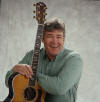
"I see Your power,
I see Your glory,
Your love has shown me
Why I'm Here"
Mack Bailey
(Click on Thumbnail photos to
enlarge)

Mack (L) performing with John Denver (R),
September 1997
Photo source unknown
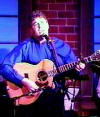
Mack performing "Eagles
and Horses" at the first John Denver Tribute, The Birchmere
Photo
by Chuck Morse
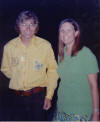
The author poses with
John Denver in 1970
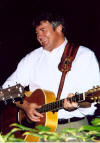
Mack's joy in music shines through at a
party.
Photo by Bill Gorny

Mack performs with The Hard Travelers

Mack first performs
"Wandering Soul" at Denver tribute in
PA

Chris and Mack
planning the sessions

"The Chart"
for "Wandering Soul"

Mack arrives at studio to record

Studio is hallowed ground - many awards by
recording stars

Studio B
Side room with piano in rear

Mack with Tom Paxton, working on Mack's song "Just Because" at the Country
Roads Folk Festival, 2000.
Photo by Barb White
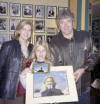
Mack’s wife, Lauren, and
daughter, Caroline, helped write the song, “Listening Ear”

Mack conducted a songwriting
workshop at the 2002 Country Roads Festival, where the idea was born for
“Cross at the End of the Road”
Photo
by Chuck Morse

Mack with Chris Nole and Bonny
Moon, writers of “Am I Ready?”

Pete Huttlinger, Chris Nole, studio recording
engineer Dave Sinko and Mack

Chris Nole
music producer
pianist, organist

Pete Huttlinger
lead guitar

Jack Pearson
guitar, mandolin, &
dobro
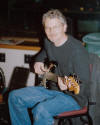
Dennis Belfield
electric bass
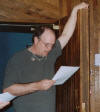
Dave Harrison
drums

The guys first listening
to song and crafting their parts
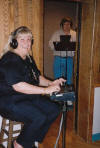
Author listening in studio to recording
process; Mack beyond in the vocal sound booth
Photo by Chris Nole

Dave Sinko and Chris mixing the sound

Chris and Mack listening to choose the best
track

While the guys tinkered, Mack was chillin'
out.
(Despite what it looks like, it's "Rolling
Stone.")

Mack singing vocals

Dimmed lighting sets an intimate mood

Mack about to loosen-up

Mack's tenor voice soared
above the instruments

Chris, the music
producer, Mack, and sound engineer, Dave, listening to recorded tracks.
 

Chris and Pete have fun with John's love of
composing longs songs about "mountains . . . trees . . . eagles . . . more
mountains . . . more eagles . . . "

John Denver's former musicians, Pete and
Chris, posing with Mack after they did initial track for John's "Wandering
Soul"
(a particular favorite of the author's, also
shown)
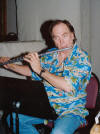
Jim Horn added the flute
track to create the signature sound

Wanda is a the whole string section unto
herself - violin, viola, cello

Chris uses synthesizer
to create low cello note.

Jim Horn and Mack

Computer screen showing
music tracks. Note the stacked line representing each instrument or vocal.
The section highlighted red is new sound being dubbed in existing track.

The lovely & talented Brittany Allyn provided
background vocals on two songs.
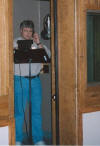
Mack touches up sections
of a few songs.

The author tries a few notes with Mack

Mack's vocals on "I Will Bring You Home" were
especially moving.

The basics are done. The producer, the executive producer,
and the Star
Photo by Dave Sinko

Mack works with the
Jordanaires on their vocal tracks.

The Jordanaires
weave their magic in the
studio: Gordon, Curtis, Louis, and Ray

Chris directing the
Jordanaires, saying that "it's not like they have a Grammy and we
don't!"

The
Jordanaires
posing with Mack, the author, and Chris.
Photo by Dave Sinko

Dave mixing the tracks
for a song.

Dave, Chris, Mack and
the author listen to mixed tracks.

With eyes closed to
fully concentrate, Mack
is monitoring the final recording onto CD.

It's done!
Photo
by Dave Sinko
|
|